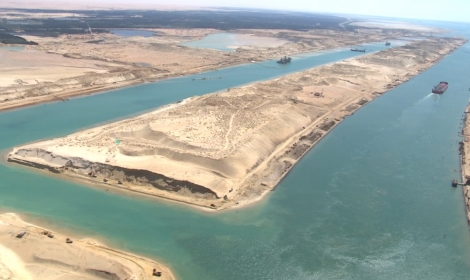The Corporate Sustainability Reporting Directive in the maritime
In an era marked by increasing environmental concerns and societal expectations for responsible business practices, the maritime industry finds itself at the forefront of sustainability scrutiny. With the European Union’s (EU) implementation of the Corporate Sustainability Reporting Directive (CSRD), the sector faces new obligations and opportunities in disclosing its social and environmental impacts. Let’s delve into how the CSRD intersects with the maritime industry and what it means for key stakeholders.
Understanding the CSRD
The CSRD, which entered into force on January 5, 2023, represents a significant evolution in sustainability reporting regulations. It builds upon the framework established by the Non-Financial Reporting Directive (NFRD) and aims to modernize and strengthen reporting requirements for large companies and listed entities across the EU.
Under the CSRD, companies must disclose comprehensive information on their social and environmental risks, as well as the impact of their activities on people and the planet. This information is crucial for investors, civil society organizations, consumers, and other stakeholders to evaluate a company’s sustainability performance.
Implications for the Maritime Industry
The maritime industry, with its substantial environmental footprint and complex supply chains, is directly impacted by the CSRD. Here’s how:
- Expanded Scope:
- The CSRD broadens the scope of reporting requirements, encompassing all listed companies with over 500 employees on EU-regulated markets. Additionally, large companies with significant operations in the EU, meeting specific criteria related to employee count, revenue, and balance sheet size, are now subject to reporting obligations. This means that many maritime companies, including shipping conglomerates and port operators, fall under the purview of the directive.
- Enhanced Disclosure Requirements:
- Companies in the maritime sector must provide detailed disclosures on environmental matters, including emissions, pollution prevention measures, and initiatives to protect marine ecosystems. Social aspects such as employee welfare, diversity, and human rights practices also come under scrutiny. Given the industry’s reliance on global supply chains and diverse workforce, transparent reporting on these issues is paramount.
- Integration with EU Taxonomy:
- The CSRD mandates companies to report on the alignment of their activities with the EU Taxonomy, particularly concerning environmental objectives. For the maritime industry, this entails assessing the compatibility of operations with sustainable practices related to water and marine resources, pollution prevention, and biodiversity conservation. Compliance with these standards is essential for demonstrating commitment to sustainable development goals.
- Assurance and Digital Reporting:
- With the CSRD, assurance on sustainability information becomes mandatory, ensuring credibility and accuracy in reporting. Independent auditors will certify the alignment of companies’ disclosures with EU standards, providing assurance to stakeholders. Furthermore, the directive emphasizes digital reporting, aiming to streamline processes, reduce costs, and improve the accessibility of sustainability data.


Preparing for Compliance
Navigating the CSRD requirements presents both challenges and opportunities for maritime stakeholders. To ensure compliance and capitalize on the benefits of transparent reporting, companies can take proactive measures:
- Assessment and Gap Analysis:
- Conduct a thorough assessment of current sustainability practices and reporting capabilities. Identify gaps between existing disclosures and CSRD requirements, prioritizing areas for improvement.
- Capacity Building:
- Invest in training and capacity building initiatives to enhance internal expertise on sustainability reporting standards and methodologies. Equip teams with the necessary skills to collect, analyze, and report relevant data effectively.
- Stakeholder Engagement:
- Foster dialogue with stakeholders, including investors, customers, and regulatory bodies, to understand their expectations and concerns regarding sustainability performance. Transparency and engagement build trust and credibility.
- Collaboration and Innovation:
- Explore partnerships with industry peers, research institutions, and technology providers to leverage collective expertise and innovative solutions. Collaborative initiatives can accelerate progress towards sustainable practices and facilitate knowledge sharing.
- Continuous Improvement:
- Establish mechanisms for continuous monitoring, evaluation, and improvement of sustainability performance. Regularly review reporting processes, incorporate feedback, and adapt strategies to evolving regulatory requirements and stakeholder expectations.
Conclusion
As the maritime industry embraces the challenges and opportunities presented by the CSRD, a concerted effort towards transparent and accountable reporting is essential. By aligning with sustainability objectives, leveraging technological advancements, and fostering collaboration, maritime stakeholders can not only meet regulatory requirements but also drive positive impact and contribute to a more sustainable future for the industry and the planet.













